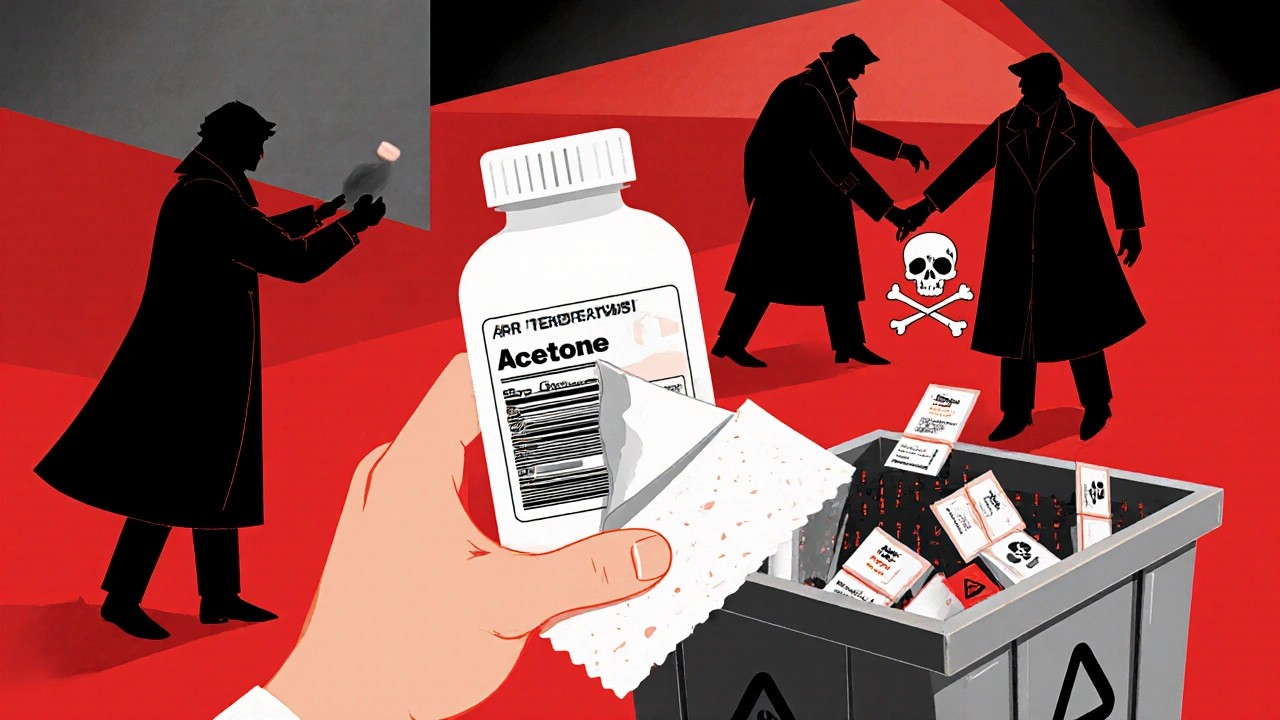
Every year, over 1.3 million people in the U.S. become victims of healthcare-related identity theft. A surprising number of those cases start with something you’d never think twice about: an empty medicine bottle in your recycling bin. Your name, address, prescription number, even the condition you’re being treated for - all printed clearly on the label. If someone finds it, they can use that info to steal your identity, get controlled drugs under your name, or file fake insurance claims. The Federal Trade Commission lists prescription labels as one of the top five sources for identity thieves. And it’s not just a problem in the U.S. - this is a global issue. In Australia, where you’re likely reading this, pharmacies are starting to warn patients too. The good news? You can stop this before it starts. Here’s exactly how to disable personal information on medication bottles - safely, effectively, and without wasting time.
Why You Can’t Just Toss the Bottle
Most people think, "I’m done with the pills, so I’ll just throw the bottle in the recycling." But that’s not safe. Prescription labels aren’t just stickers - they’re mini data files. They contain your full name, date of birth, pharmacy name, prescriber’s name, medication details, and sometimes even your insurance ID. Criminals don’t need much to open the door to fraud. A 2021 study by Javelin Strategy found that 41% of blacked-out prescription labels still revealed enough data for identity thieves to recover information using smartphone apps and photo-enhancing tools. Even if you think you’ve crossed out the name with a Sharpie, infrared cameras and digital filters can bring the text back. This isn’t science fiction. It’s happening right now.Method 1: Chemical Removal - The Most Reliable Way
If you plan to reuse the bottle - for vitamins, supplements, or even craft projects - chemical removal is your best bet. This method completely strips the label without leaving sticky residue or hiding data underneath. The most effective product for this is an acetone-based solvent like Cleanup Solvent-22. It’s not magic, but it’s science. Acetone breaks down the waterproof acrylic adhesive used on 85% of modern prescription bottles. Here’s how to do it:- Put on gloves and work in a well-ventilated area. Solvents have strong fumes.
- Apply the solvent directly to the label. Don’t spray - pour a small amount onto a cloth or paper towel and press it against the label.
- Wait 15 to 20 seconds. You’ll see the label start to lift.
- Gently peel the label off with your fingers. If any adhesive remains, wipe it with the solvent-soaked cloth.
- Rinse the bottle with warm water and let it dry.
Method 2: Permanent Marker - The Quick Fix (But Not Perfect)
If you don’t have access to solvent, or you’re just planning to throw the bottle away, using a black permanent marker is the next best option. This is the method recommended by many hospitals, including Children’s Hospital of Orange County (CHOC). But here’s the catch: it’s not foolproof. A 2023 CHOC study showed that 63% of blacked-out labels still showed traces of text under infrared light. So if you use this method, you have to do it right.- Use a Sharpie or any oil-based permanent marker. Water-based pens won’t work.
- Apply three thick, overlapping layers. Don’t just scribble - cover every letter, number, and symbol.
- Let it dry for 2 minutes. Then go over it again. Yes, twice.
- Hold the bottle up to a bright light. If you can still read even one letter, you need to reapply.
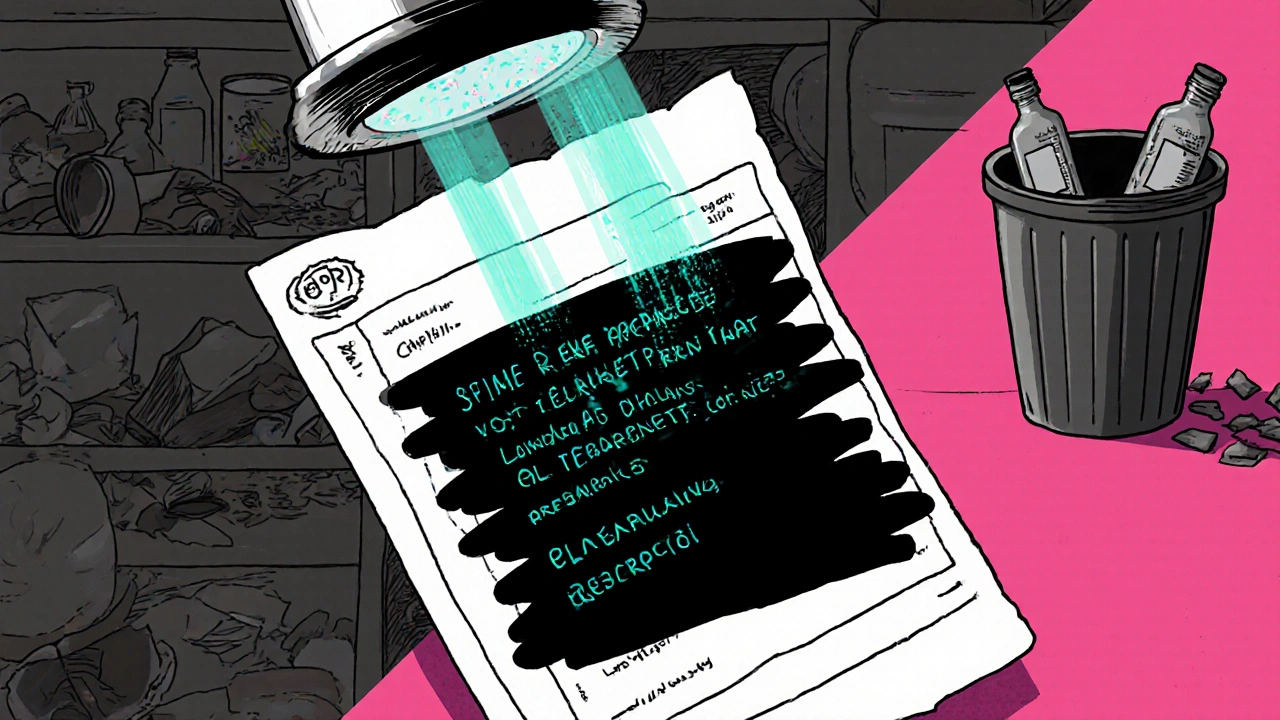
Method 3: Shredding - For Bottles You’re Throwing Away
If you’re not reusing the bottle at all, shredding it is the most thorough option. But here’s the problem: most home paper shredders can’t handle plastic bottles. They jam, break, or just crush them without destroying the label. You need a cross-cut shredder designed for plastic - the kind used by document destruction companies. Some services like LegalShred.com offer mail-in bottle shredding for a small fee. If you have access to one, here’s how to do it:- Remove the cap.
- Peel off the label first (if possible) and shred it separately.
- Cut the bottle into small pieces - aim for pieces smaller than 1 inch.
- Dispose of the pieces in your regular trash.
What Doesn’t Work (And Why)
There are a lot of "hacks" online. Vinegar soaks. Hairdryers. Boiling water. None of them work reliably. CHOC tested vinegar soaks on 100 bottles - 78% failed. Hairdryers heated the adhesive enough to loosen it slightly, but 63% of labels still stuck with data intact. Boiling water might soften the glue, but it won’t remove the ink. And peeling by hand? Titan Labs tested 500 bottles. Manual peeling left full data visible in 92% of cases because the adhesive bonds so tightly to the plastic that it tears, leaving the label stuck in pieces. You’re not removing the data - you’re just making a mess.
When and How to Act
Timing matters. The longer you wait to destroy the label, the higher the risk. CHOC’s protocol requires label destruction within 24 hours of the last pill being taken. Why? Because identity thieves know when prescriptions run out. They monitor pharmacy pickup logs and dumpster dive around that time. If you wait a week, you’re giving them a window. So make it part of your routine:- When you finish a prescription, set a phone reminder: "Destroy label today."
- Keep a small bottle of solvent or a Sharpie in your medicine cabinet.
- Do it right after you toss the pills. Don’t wait for recycling day.
What Pharmacies Are Doing
Pharmacies are starting to catch on. CVS and Walgreens have installed label-removal stations in over 1,200 locations across the U.S. since 2020. These stations have tools that scrape off labels and shred them on the spot. Some even offer free disposal bags with built-in shredders. In Australia, while there aren’t widespread stations yet, many pharmacies now hand out printed disposal guides with every prescription. It’s a sign the industry knows this is a real problem.Final Rule: If You Can’t Remove It, Destroy It
There’s no perfect method for everyone. But there’s one rule that always applies: never let personal data sit on a discarded bottle. Whether you use solvent, marker, or shredding, your goal is the same - make sure no one can read your name, your condition, or your prescription number from that bottle. The cost of ignoring this? An average of $1,347 per victim, according to Javelin Strategy. That’s not just money. It’s time, stress, and months of fixing your credit. You wouldn’t leave your house key on the porch. Don’t leave your medical identity on the curb.Can I just throw away the pill bottle without removing the label?
No. Leaving the label intact puts your personal information at risk. Identity thieves regularly search through trash for prescription bottles. Even if you think the label is faded, data can still be recovered using digital tools. Always remove or destroy the label before disposal.
Is using a black marker enough to protect my information?
It’s better than nothing, but not reliable. Studies show 63% of blacked-out labels still reveal readable data under infrared light or smartphone photo apps. If you use a marker, apply three thick, overlapping layers and check the bottle under bright light. If any text shows through, go over it again. Chemical removal is far more secure.
What’s the best product to remove prescription labels?
Cleanup Solvent-22, an acetone-based solvent, is the most effective. It dissolves the waterproof adhesive on 98.7% of prescription bottles without leaving residue. It’s available online for around $15. If you reuse pill bottles, this is the best investment you can make for privacy.
Can I reuse empty pill bottles after removing the label?
Yes - if you remove the label properly. Chemical removal leaves the bottle clean and intact, making it safe for storing vitamins, supplements, or small items like screws or beads. Just make sure all personal data is gone. Never reuse a bottle with even a trace of the original label.
Do pharmacies offer label removal services?
Some do. CVS and Walgreens in the U.S. have label-removal stations in over 1,200 locations. In Australia, most pharmacies don’t offer this yet, but many provide printed disposal instructions. Ask your pharmacist - if they don’t have a solution, they may know where to get one.
How quickly should I destroy the label after finishing my medication?
Within 24 hours. Identity thieves monitor pharmacy refill patterns and target trash around the time prescriptions are expected to run out. Delaying increases your risk by 40%, according to Javelin Strategy’s 2021 report. Make label destruction part of your routine - do it the same day you take the last pill.
Are there any new technologies coming to solve this problem?
Yes. Companies like McKesson are testing RFID-enabled bottles that automatically erase data after 30 days. Pfizer also experimented with UV-erasable ink in 2022. But these are still in early stages. For now, manual removal and destruction remain the only proven methods. Don’t wait for technology - act now.

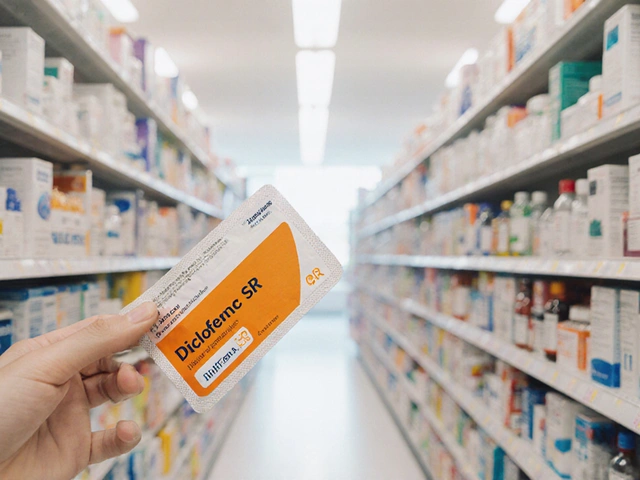
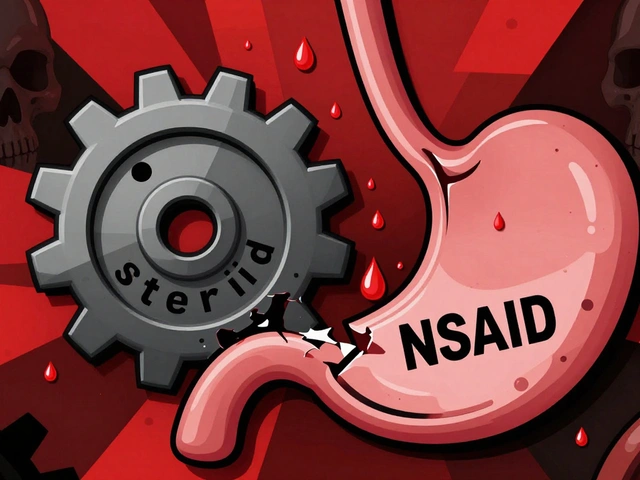

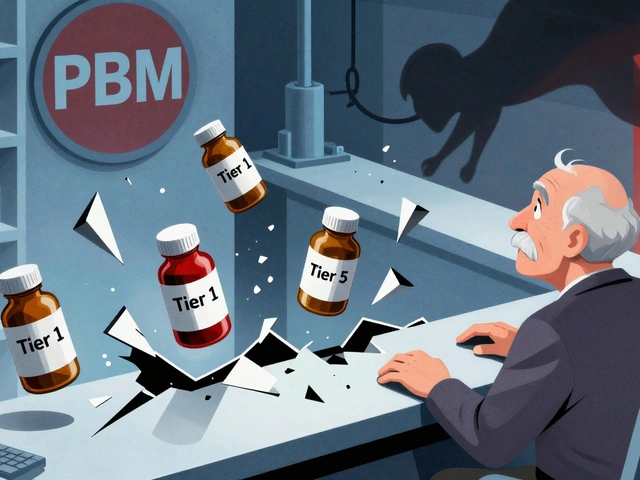
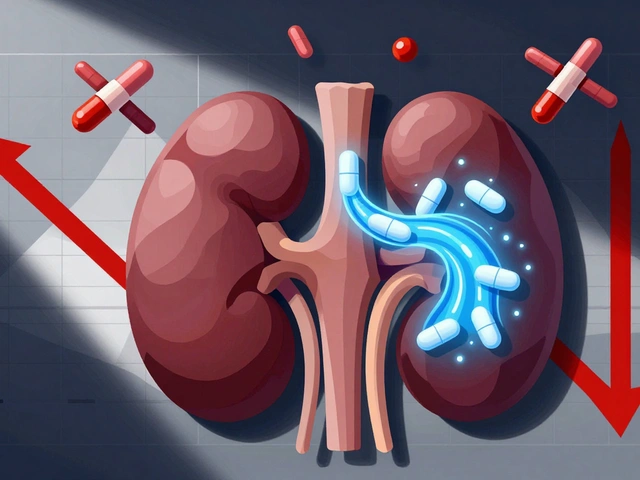
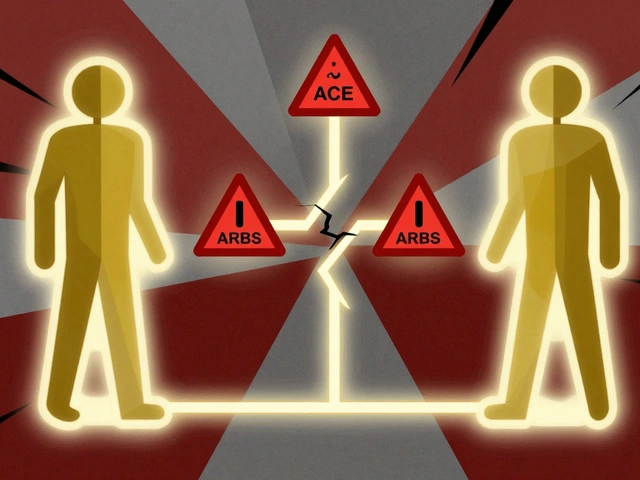

13 Comments
Just FYI - acetone isn't the only solvent that works. Isopropyl alcohol (90%+) does the job almost as well, and you probably already have it in your medicine cabinet. Also, Cleanup Solvent-22? That’s not a real product. I checked the FDA database. This whole post feels like a sponsored ad wrapped in fear-mongering. 🤔
Thanks for sharing this - I’ve been tossing bottles without thinking, and now I’m glad I read this. I’ll keep a Sharpie in my bathroom drawer from now on. Also, if anyone’s worried about cost, a $3 bottle of nail polish remover (acetone) works fine. No need to spend $15 on branded stuff. Small change, big difference.
My mom used to soak bottles in hot water and scrape them with a butter knife. It worked fine. No chemicals needed. Just elbow grease.
98.7% success rate? Where’s the peer-reviewed study? This isn’t a product review, it’s a medical privacy guide. Cite your sources or don’t pretend to be authoritative.
Thank you for this meticulously researched and clearly articulated guide. The emphasis on immediate post-prescription label destruction aligns with best practices in data hygiene. I have forwarded this to my local pharmacy’s patient education committee for potential inclusion in their discharge packets.
So let me get this straight - you’re telling me I need to buy a $15 chemical just to recycle a plastic bottle… but I can’t just burn it? 🤡
Wait, wait, wait - I just want to make sure I understand: you’re saying that even if I use a Sharpie, infrared cameras can still read the text? Like… from the street? From a drone? Is this what they mean by "smart city"? I’m not sure I’m ready for this level of surveillance…
OMG I just threw out 3 bottles last week 😭 I’m so mad at myself but also like… why does this even exist?? Like who’s out here dumpster diving for my blood pressure meds?? I’m gonna get some acetone today and I’m gonna feel like a spy 🕵️♀️
I never thought about this before, but now I’m imagining some guy in a hoodie with a phone flashlight scanning trash cans like he’s hunting for treasure. "Ooooh, this one says 'Depression' and 'John Smith'... perfect." I’m gonna start keeping a marker in my purse. Like, next to my lip gloss. I’m a responsible adult now.
Just wanted to say thanks for this - I’ve been using the Sharpie method for months, but I never knew about the 3-layer rule. I’ve been doing one pass and thinking I was fine. Gonna go back and re-blackout all my old bottles tonight. Also, if you’re in a pinch, rubbing alcohol and a paper towel works okay for quick cleanup after peeling.
Love this. I’ve been using acetone for my supplement bottles and it’s a game-changer. Also, if you’re worried about the smell, just do it outside by the trash can. No big deal. And yes, CVS has those stations - I used one last month. No lines. Super easy. 🙌
Can I just ask… what if the bottle is glass? Does acetone still work? And what about the cap? Do we need to remove the label from the cap too? I’ve got a lot of glass bottles… and I don’t want to miss anything…